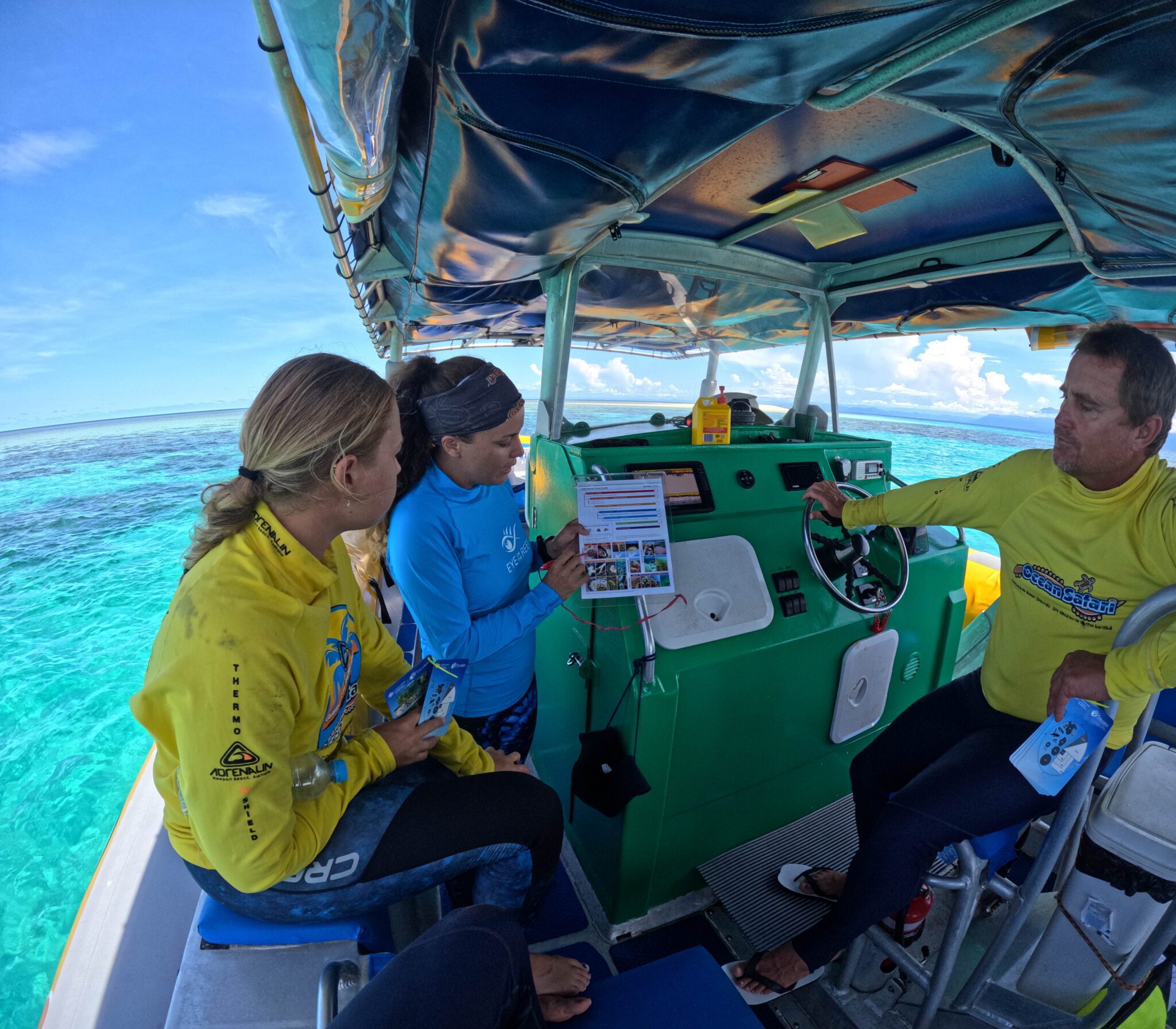Ocean Safari has been keeping an eye on Mackay Reef for over 12 years!
This gives our crew the luxury of leaning into long term monitoring data when sharing site information or answering health related queries our guests might have.
Ocean Safari crew are trained on how to correctly and efficiently monitor Mackay Reef through the Great Barrier Reef Marine Park Authority (GBRMPA) as part of the Eye on the Reef program (EOTR). It is through this program crew are able to gain a deeper understanding into the cause and effects of activity occurring on our patch of reef.
Here is a brief insight into the methods we use;
-Tourism Weekly: This data is collected from our high value tourism site, meaning the path where we take our guests every single tour. It is a categorical timed survey over 20 minutes taking note of reef health indicators like macro algae, grazing herbivores, bleaching, coral predators, disease or recent coral damage.
-Photo Point Enhancement Survey: This compliments the data provided from the Tourism Weekly to show cause and affect. A top-down image is taken every 5m along the Tourism Weekly path then those images are then loaded into a data base where our crew classify 9 points on each image into appropriate labels e.g macro algae or substrate.
-Reef Health Impact Survey (RHIS): when collecting this data, the same reef health indicators are recorded however these surveys are conducted in groups of 3 within a 5m radius in the same habitat zone e.g lagoon, reef flat, crest or slope. The three data sets are also collected within the same depth range either 3m,6m or 9m.
-Rapid Health Monitoring: A quick snap shot, we love to use this method for our guests participating on our “Reef Seeker” tour package.
We also religiously monitor water temperature, vertical visibility and tidal height to accompany all of our survey methods.
The continual monitoring we provide at Ocean Safari for Mackay Reef allows for the early detection of coral predator out breaks such as the Crown of Thorns Starfish or early warning signs of coral bleaching which we are able to report directly to the GBRMPA .
Due to the sheer size of the Great Barrier Reef the GBRMPA really rely on tourism operators like us to provide these vital data sets and sightings, this allows the GBRMPA to respond and distribute resources where they are needed most.
Our crew can also add in any extra special encounters or sightings into the EOTR data base like our regular Green Sea Turtle encounters, Humpback Whales on their calving migration, courtship, mating or hunting behaviours – big or small!
Anyone visiting the Great Barrier Reef can contribute, it is as simple as downloading the Eye on the Reef app and logging your own encounters!

